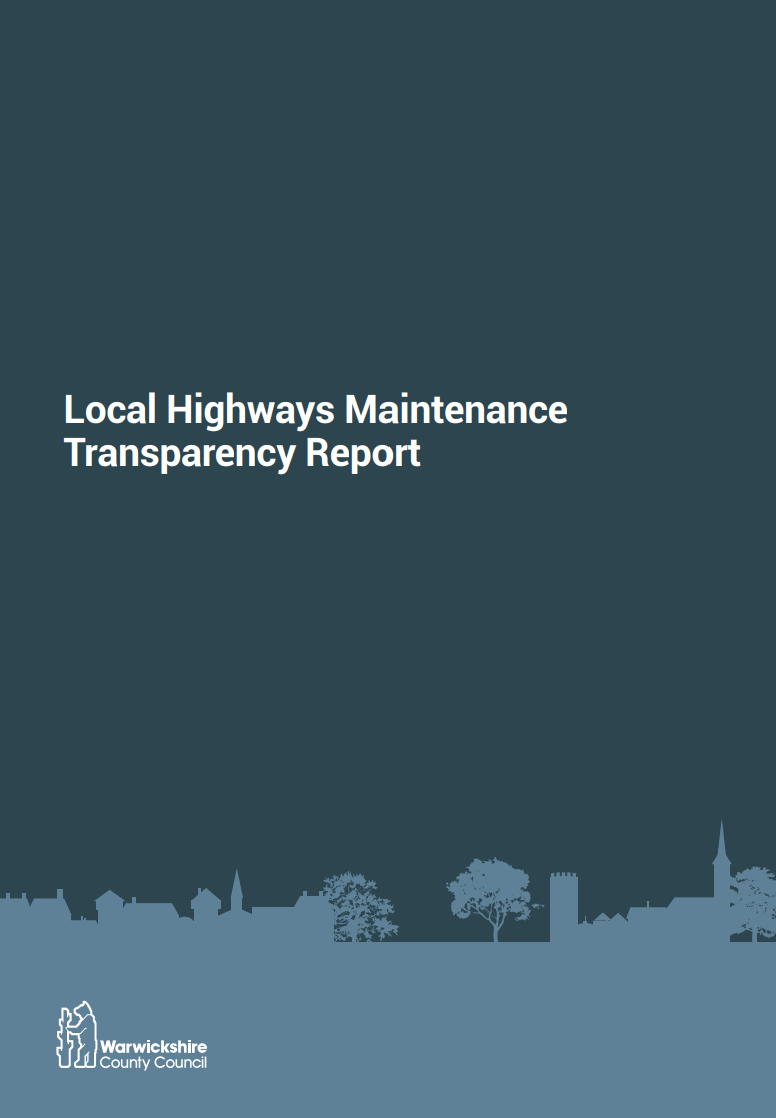Specific plans for 2025/26
We undertake a range of activities to maintain the roads in Warwickshire including carriageway resurfacing, footway resurfacing, and structural patching works.
Details about our schemes, broken down by the relevant district and borough areas can be found in our future works section.
For this financial year we expect to permanently repair over 12,000 potholes. Additionally, approximately 300 localised patching repairs will be undertaken on our carriageways, with around 200 on our footways
| Treatment | Reactive or preventative | Number of sites | Total length (km) |
|---|---|---|---|
| Surface dressing | Preventative | 225 | 123.53 |
| Resurfacing (carriageway) | Preventative | 43 | 9.81 |
| Resurfacing (footway) | Preventative | 40 | 6.51 |
| Structural patching | Preventative | 22 | 3.75 |
The average size structural patch is around 750 square metres.
| Road/reference | Structure name | Works description |
|---|---|---|
| C141/RW003 | Talton House Retaining Wall | Repair and partial reconstruction |
| B4085/008 | Oosland Barn No 1 | Invert scour repairs |
| B4065/003 | Antsy Canal | Ground investigations |
| C98/001 | Alvestone Pastures | Partial reconstruction of upstream end design only |
| C34/004 | Birdingbury River Bridge | Replacement of failed training wall |
| CAMS/142/4 | Booth Bridge | Demolition |
| A428/002 | Bretford Bridge | Parapet RTC repairs |
| B4144/019 | Tuttle Rail | Parapet collision repair and arch repointing |
| D5355/001 | Coughton Ford Footbridge | Footbridge panel replacements |
| C53/017 | Honington | Carriageway kerb setts and design of main works |
| B4029/002 | Shilton Station | Drainage and concrete condition survey |
| A425/016 | Thorpe Bridge | Invert scour repairs |
| C125/007 | Coton | Ongoing monitoring, sign upgrades, patching |
| B4098/020 | Manor House Culvert Fillongley | Culvert Lining |
| D5395/001 | Oversley Green River Bridge | Arch two voussoir repair |
| C33/002 | Bubbenhall | Parapet RTC repairs |
| C14/002 | Duke | Parapet RTC repairs |
| B4029/015 | Bulkington Station | Rail incursion risk mitigation |
| D2176/002 | Stretton on Dunsmore No 2 | Parapet rebuild and possible saddling |
| D1829/001 | St Giles Road | Verge protection bollards |
| C72/002 | Wellesbourne New Flood | Water ingress issue |
| A429/031 | Dove House Subway | General repairs |
| B48084/006 | Bidford River Bridge | Major stonework repairs |
| A425/004 | Castle Bridge (Warwick) | Major stonework repairs |
Streetworks
Highway activities can inconvenience traffic, pedestrians, cyclists, residents, and businesses, causing congestion and disruption. Effective coordination and management require timely communication and efficient design to mitigate disruption. Permits help manage applications for utility and highway works, which often impact traffic the most. The Traffic Management Act 2004 mandates traffic authorities to ensure smooth traffic flow on their networks and neighbouring ones.
Warwickshire County Council participates in the West and Shires Permit scheme (WaSP), which aims to coordinate highway activities, reduce disruption, maintain the highway, improve public health, respond to incidents, and enhance public transport. The scheme provides a common framework for authorities in the West Midlands, promoting consistency while allowing local discretion.
The WaSP scheme supports economic growth by managing major infrastructure projects and events without undue delays. Warwickshire promotes better practices among its departments and statutory undertakers through coordination meetings, consultations, and shared planning. The scheme’s objectives include ensuring safety, minimizing inconvenience, protecting street structures, and maintaining parity among activity promoters.
Warwickshire’s proactive management has led to benefits like safe road use, reliable journey times, network resilience, reduced inconvenience, and improved public satisfaction. Regular meetings with utilities and other stakeholders help plan and coordinate works, fostering collaboration and innovation to minimise disruption.
